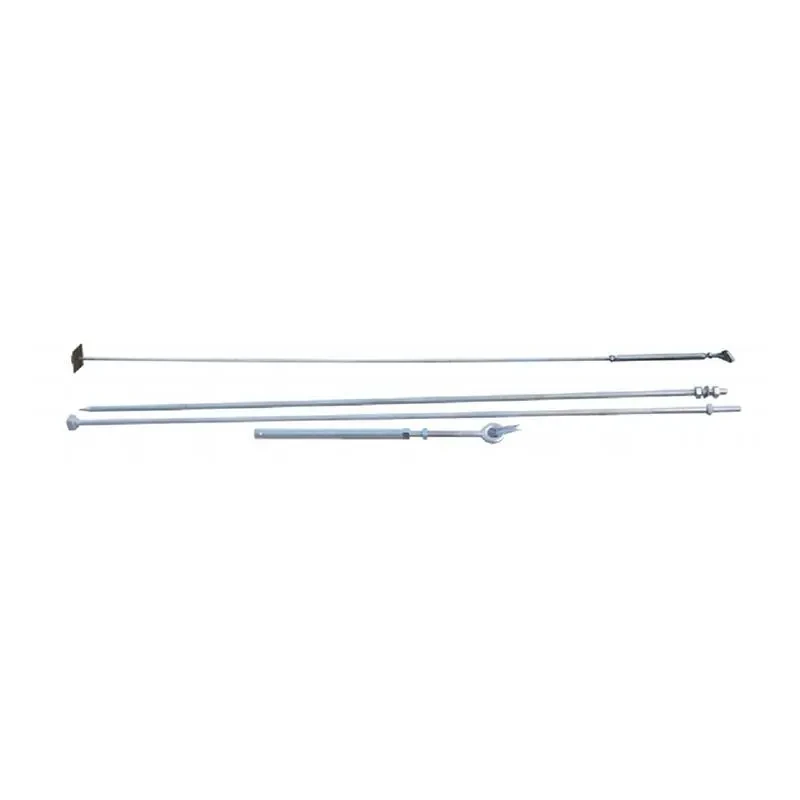
Stay Rods
Understanding Stay Rods in Electrical Pole Installation: A Key Element for Safety and Stability
When it comes to the installation of electrical poles, staying power isn’t just about sturdy materials or skilled workers. There’s a crucial component that ensures these poles stand tall and endure the test of time—stay rods. In this blog, we’ll explore what stay rods are, why they’re essential in electrical pole setups, and how they contribute to the safety and longevity of utility structures.
What Are Stay Rods?
Stay rods are steel or metal rods used in the installation of electrical poles to provide lateral stability. They are often paired with stay wires (also called stay cables), which are typically high-strength wires that run from the top of the pole to the ground, at an angle. The rods themselves are used as a connection point between the wire and the pole, securing the stay wire in place and ensuring the pole remains upright under various environmental pressures.
Why Are Stay Rods Important?
Stay rods are essential for a number of reasons:
-
Enhanced Stability: Electrical poles are subject to environmental forces like wind, snow, and even seismic activity. Stay rods help distribute the tension created by these forces, preventing the poles from swaying or tipping over.
-
Preventing Pole Deformation: Without proper support, poles could lean or warp over time, especially in areas with frequent weather fluctuations. Stay rods ensure that the force exerted by the stay wire is distributed properly, reducing the risk of damage or deformation.
-
Increased Lifespan of Poles: By preventing undue stress on the pole itself, stay rods and wires contribute to the long-term integrity of the installation. Electrical poles, especially wooden ones, are an investment, and stay rods ensure they serve their purpose for as long as possible.
-
Safety of the Electrical Grid: A tilting or fallen pole can create hazards like power outages, fires, or electrocution risks. Stay rods provide the necessary support to minimize the risk of accidents, making the electrical grid safer for everyone.
How Do Stay Rods Work?
Stay rods are typically installed alongside the pole’s primary foundation, where they attach to the stay wires. Here’s how they function:
- Anchor Setup: The stay rod connects the stay wire to an anchor point on the ground, usually at a distance from the pole. The anchor point is often a solid foundation, such as a concrete block or deep-ground anchorage.
- Tension Distribution: When external forces (like strong winds) push against the pole, the stay wire experiences tension. The stay rod helps transfer this tension down to the anchor point, which keeps the pole from toppling.
- Angle of Support: The stay wire is installed at an angle, generally between 30 to 60 degrees to the horizontal. This setup ensures maximum stability while preventing too much strain on any single part of the system.
Types of Stay Rods
Not all stay rods are created equal, and the choice of rod material and design often depends on the specific needs of the installation site:
- Galvanized Steel Stay Rods: These are the most common and are chosen for their strength and resistance to corrosion. The galvanization process protects the steel from rust, making these rods ideal for outdoor environments where weather can take a toll.
- Pre-stressed Concrete Rods: In some cases, stay rods made of pre-stressed concrete might be used, especially in areas with high seismic activity. These rods provide additional strength to withstand lateral forces.
- Composite Stay Rods: Newer technology has introduced composite materials, offering advantages in both weight and corrosion resistance, though they are typically less common than steel.
Installation and Maintenance
Installing stay rods requires a careful process to ensure proper tension and stability:
- Surveying the Site: Before installation, engineers assess the ground conditions, including soil type, weather patterns, and the layout of the electrical grid. This information helps determine the correct placement and angle of the stay rods.
- Digging the Anchor Hole: A deep hole is dug to install the anchor point for the stay wire. The stay rod is attached to the pole at a specific height, and the wire is run to the anchor.
- Securing the Rod and Wire: The stay wire is tensioned, and the stay rod is tightened to ensure there is no slack. This requires precise calibration to prevent too much or too little tension.
- Periodic Inspections: Over time, stay rods and wires are inspected for signs of wear, corrosion, or tension loss. Routine maintenance ensures that the system remains functional and the pole stays properly supported.
Stay rods are more than just a supporting component—they’re a vital part of any electrical pole installation that ensures safety, longevity, and stability. Whether you're building new electrical infrastructure or maintaining existing systems, these unsung heroes help keep power flowing safely to communities everywhere.
If you're involved in electrical installations or just curious about how infrastructure works behind the scenes, understanding the role of stay rods gives you a greater appreciation for the engineering that keeps our lights on and our systems running smoothly.
179
0
746
172

